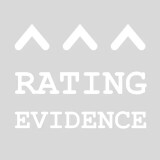Headline ratings no longer enough
Prof. Dr. Nils Stieglitz gave a welcome address to the conference “ESG Ratings: The Good, the Bad, the Ugly” of the Corporate Governance Institute (Prof. Dr. Julia Redenius-Hövermann) at the Frankfurt School of Finance & Management, followed by Prof. Dr. Zacharias Sautner, showing data of Hartzmark and Sussman, 2019, proving that investors value sustainability. He introduces the subject “ESG Ratings in the Investment Process”.
“Corporate ESG ratings are the most unseful source of information”, says Zacharias Sautner. This is confirmed by various studies. ESG ratings provide data material to investment performance, supplement organization’s other research of corporate ESG performance/risk.
SustainAbility, an ERM Group company, is a think tank and advisory firm that works to inspire and enable business to lead the way to a sustainable economy. In 2010, SustainAbility undertook its first “Rate the Raters” project to better understand the environmental, social, and governance (ESG) ratings landscape and provide perspectives to help companies, investors and other stakeholders make sense of and derive more value from ESG ratings.
In general, investors recognize that ESG ratings and rankings are not going away any time soon. When
asked what changes and solutions they would like to see in the next five years the leading responses
from the survey were the following:
- Improved quality and disclosure of methodology
- Greater focus on relevant/material issues
- Better linkage to company financial performance
- Greater consistency and comparability across
- rating methodologies
- Greater engagement of rated companies in the
- evaluation process
- Consolidation of ratings
These expectations were reiterated in the interviews along with a desire for more timely coverage, more data, integration of ESG into financial reporting and the ability to evaluate corporate societal impact vs. just operational performance.
Dr. Florian Berg, Massachusetts Institute of Technology, spoke about the divergence of ESG ratings. Correlations of the varios raters’ ratings range from 38% to 71%. Based on data from six prominent rating agencies namely, KLD (MSCI Stats), Sustainalytics, Vigeo Eiris (Moody’s), RobecoSAM (S&P Global) the divergence into three sources. “We do not even know the truth, therefore we only can compare”, argues Florian Berg. “We describe ESG ratings in three elements.
- Scope: which attributes are included?
- Measuremaent: how ar e these attributes measured?
- Weights: how are indicators aggreagted into one score?
Aggregation and mesurement are the biggest sources of differences. See Aggregate Confusion: The Divergence of ESG Ratings, 2019.
What are the implications for investors? According to Florian Berg, the following two tasks have to be accomplished: Clarify ESG preferences, scope and weights, and investors have to answer the question: What measurement methodology do you agree with most?
Ingo Speich, Head of Sustainability and Corporate Governance, Deka Investment, points to the fact that investors no longer look only at headline ratings, but dig deeply into the data. He outlines the problem that the regulator requires financial service providers to report on ESG criteria. However, the data required for this are not sufficiently reported by the companies concerned, so that the financial service providers are faced with the difficulty of collecting, processing and passing on this data.




















Leave a comment